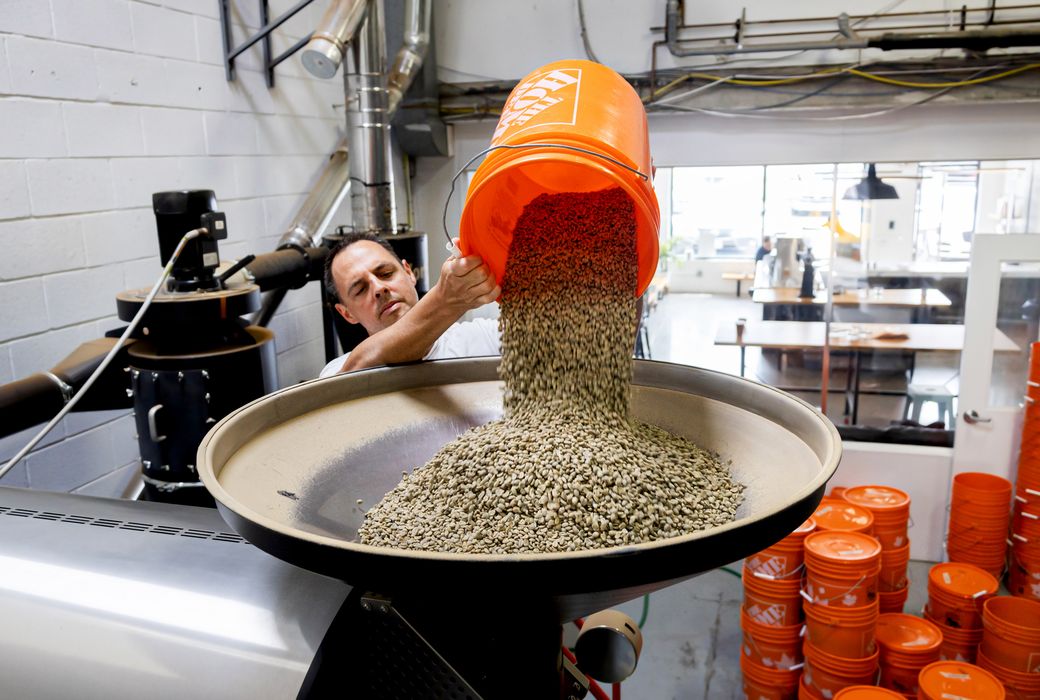Vintage Cat Cafe
Vintage Cat Cafe, a cozy and charming spot that combines, yes, you guessed it, coffee and cats, has a home in Corso Italia.
Offering homemade sweets, savoury bites, Turkish brews, and decor well-suited for a photo op, it's a great spot to relax with a friend or furry companion.
The family-run business was started by manager and owner Filiz Ok and her husband and co-owner, Cemal Ok.
The two moved to Canada 10 years ago from Turkey, where cat cafe culture was much more prominent. There, it was also common practice for communities to care for and look after their local stray felines.
Not loving the commercial feel of coffee shops they frequented, the long-time cat parents saw an opportunity to bring two things they love together.
"Everything started with that dream," Cemal Ok shared with blogTO. "Why not combine both to create a unique space."
As the name suggests, the spot has a very vintage feel. From the antique mirrors and mismatched picture frames to the floral wallpaper and cozy fireplace, it gives the impression of a grandmother's living room.
There are little treasures to discover throughout the space that the team worked hard to collect. I caught sight of a rotary phone and beautiful china displayed on the armoire.
Helping to pull the design together is the hand-selected furniture from Turkey. A plush velvet booth in striking burnt orange lines the wall and contrasts nicely against the accent green chairs.
Beyond the design, one of my favourite parts of the cafe is the free cookie with your drink of purchase. The cookie is very on-theme - a chocolate chip shortbread baked in the shape of an adorable cat.
The latte (medium $5.45) is a great hot beverage to dunk the cookie in. Made from delicious Turkish coffee beans, it's perfect for the cooler months in Toronto.
For warmer weather, the Iced Caramel Macchiato (medium $5.25) is great if you prefer your coffee on the sweeter side.
For those who typically go for a classic espresso, try the Turkish Coffee ($4.95). It comes with a small glass of rose-infused water and a few Turkish delights.
Feliz and Cemal shared with me the proper way to drink the beverage. I started with a small sip of water, followed by the coffee. The mouthfeel is tricky to describe. It's rich yet bitter and has a slightly more prominent texture than your average cup.
The Iced Strawberry Matcha (large $6.45, strawberry syrup +$1) was the prettiest beverage of the four. A balance of bitter and sweet, I appreciated the attention to detail, the straws covered in little paw prints.
To eat, the homemade Almond Nutella Croissant ($5) is a great breakfast option. It's buttery, flaky, and golden brown, and I loved the added texture of the almond slivers.
One of Filiz's favourite bites is the Pistachio Baklava ($3.50 each). The pastry made with layers of crunchy filo is sweet and nutty, thanks to all the freshly chopped pistachios.
For something savoury, there's the Cheese Roll ($7.50) loaded with creamy, salty feta. The roll itself is light and fluffy, and the tang of the feta cheese is delicious.
My favourite menu item was the Potato Roll ($7.50). Comforting and well-seasoned, with thin slices of delicately stacked potato, I would order it again for breakfast or lunch.
The team is also playing around with other brunch items they hope to add to the cafe menu, including sandwiches, waffles, and salads.
One of the things I was most impressed by was the attention to cleanliness. There's no need to worry about any cats sneaking near your food!
Behind a large glass door, the five cats roam about. The cats include one Persian, one Himalayan, a Ragdoll, and two Siamese British. They all belong to the Ok's, and the couple hopes to collaborate with cat rescues in the near future.
The cat portion of the cafe requires an advanced booking, although walk-ins are welcome. For $24.95 per person, you get the room for an hour and one drink from the cafe menu. There's also a package plan for a discounted price.
Vintage Cat Cafe is located at 1274 St Clair Ave West.
Fareen Karim









